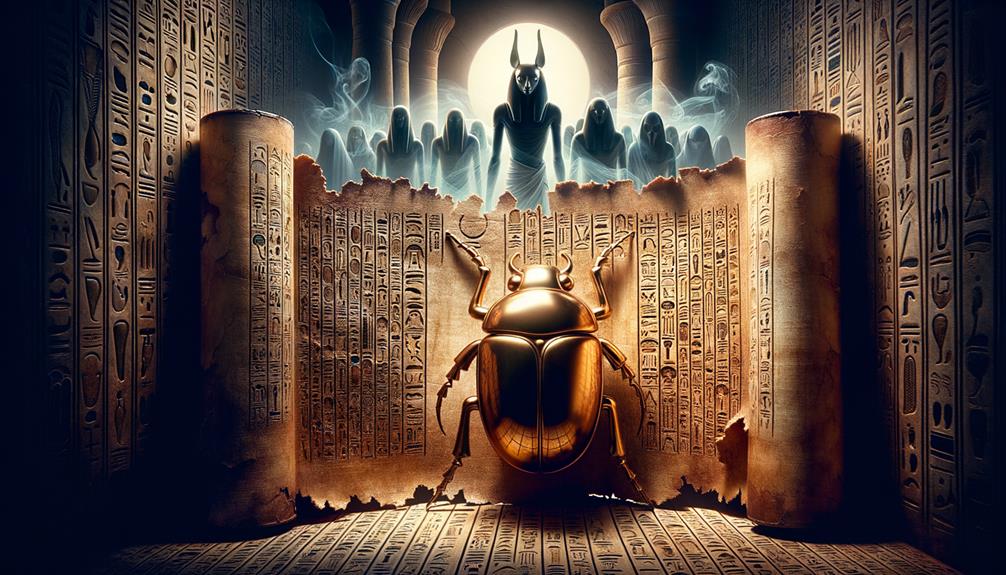Imagine this – you're sifting through broken papyrus scrolls, remnants of the tomb of Tutankhamun, the famed pharaoh of ancient Egypt. These scrolls are pieces of the ancient Egyptian 'Book of the Dead', a complex mix of symbols and drawings that are meant to help the departed navigate the afterlife. But it isn't a book in the typical sense. It's more like a compendium of spells and rituals, each carrying its own special purpose and symbolism.
Now, the big question – what do these symbols mean? How can we, living in the 21st century, decode the mysterious language and imagery of a civilization that existed so long ago? This has been a question that's been bugging me, one that calls for a detailed, academic examination.
We've made some progress in understanding the culture of ancient Egypt, but there's a great deal more to learn about the 'Book of the Dead'. There's a whole world of enigmatic spells and detailed drawings waiting to be fully understood, a whole guide to eternity waiting to be pieced together.
Understanding the Book's Origins

Taking a closer look at the origins of the Book of the Dead really makes you realize how intriguing it is. This collection of magical spells was meant to help the dead navigate the afterlife, and it developed from earlier texts like the Coffin Texts and Pyramid Texts. It's key to remember that this Ancient Egyptian Book wasn't a book in the way we think of books today. It was actually a compilation of 34 crucial spells, typically written on papyrus, designed to assist the deceased in dealing with the intricacies of the afterlife.
This book has deep roots in ancient Egyptian history, providing a glimpse into the evolution of their funeral customs. Affluent Egyptians paid professional scribes to pen these spells, which were then added to other burial offerings. This custom underscores the vital part the book played in how the ancient Egyptians perceived life, death, and what happens after we die.
Over time, the Book of the Dead morphed into the Books of Breathing, signaling a notable change in Egyptian burial practices. This change implies a shift in views on death and the afterlife, underscoring that religious and cultural beliefs are not fixed and can change over time. Studying the origins of the book offers insights into the ancient Egyptian mentality, and their complex views on death and life after death.
Dissecting the Hieroglyphic Texts
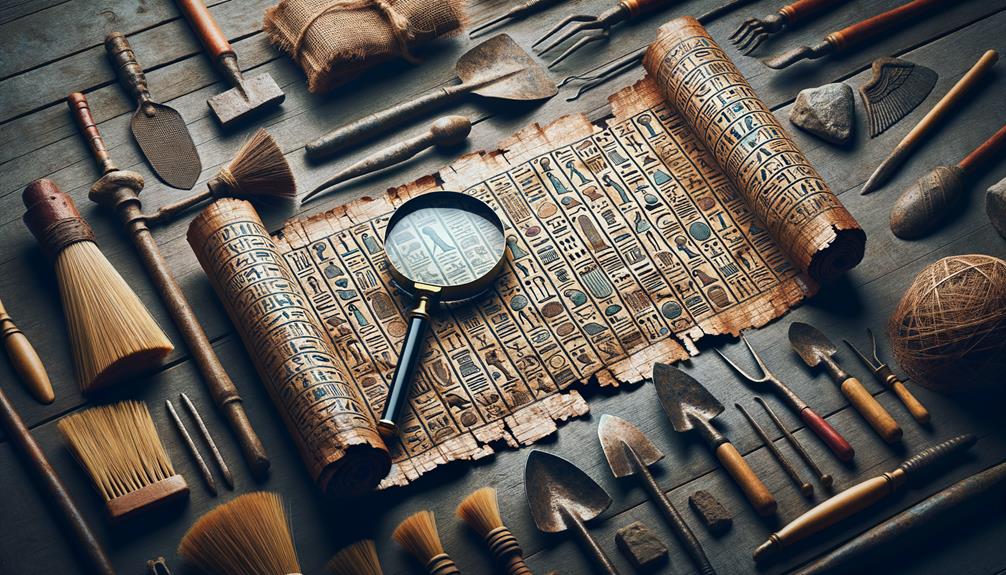
Unraveling the mysteries of hieroglyphic texts found in the Book of the Dead is like embarking on an exciting journey. These texts are a treasure trove of magical spells that were believed to assist the departed souls in their journey through the afterlife. Ancient Egyptians had a firm belief that these spells, primarily written on papyrus scrolls, were the keys to a smooth transition from mortal life to their version of 'Coming Forth By Day'.
Being in charge of research archives, I've had the exciting opportunity to study these spells closely. Here's what I've learned about these Egyptian hieroglyphic texts:
- The spells were not just inscribed on papyrus, but also on the walls of tombs.
- Rich Egyptians preferred bespoke scrolls, while ordinary folks went for the ones that were mass-produced.
- The Weighing of the Heart Ceremony, a crucial event in the afterlife journey, is frequently referred to.
- The spells were versatile, addressing past wrongdoings, and offering transformative experiences.
- To translate these accurately, one needs to rigorously study color copies and descriptions.
The hieroglyphic texts in the Book of the Dead reflect the intricate belief system and rich cultural legacy of the ancient Egyptians.
Purpose of the Death Rituals
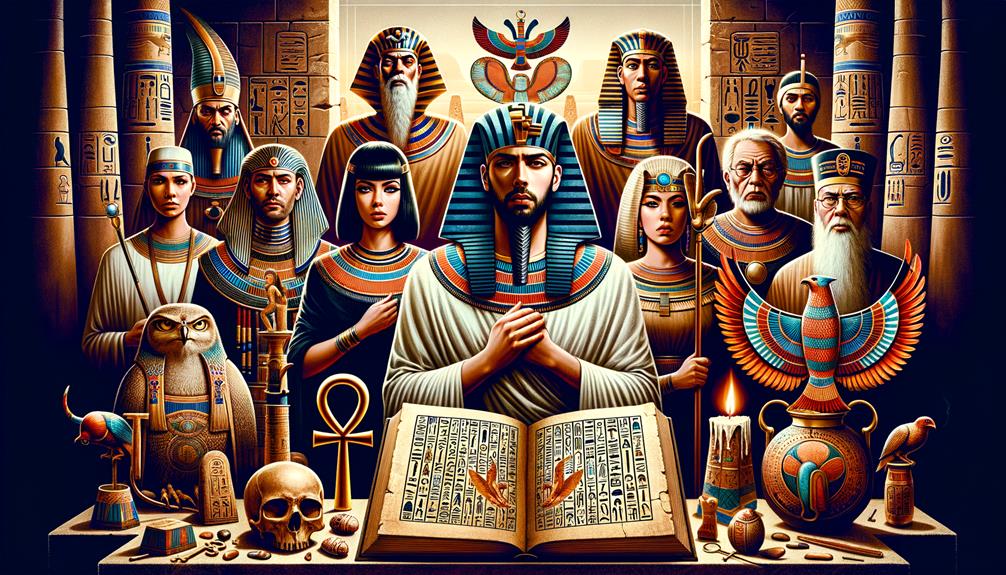
When we delve into the mysteries of the Book of the Dead, it's quite fascinating to ponder over the reasons these detailed death customs held a significant place in the life of ancient Egyptians. The main aim of these death customs was to aid the deceased on their journey in the world beyond.
Take for example, the 'Weighing of the Heart' ritual. It involved comparing the weight of the deceased's heart with the feather of the goddess Ma'at. The outcome of this comparison would decide their fate in the afterlife, with the purity of their heart being the deciding factor. If the deceased's heart was heavier than the feather, it suggested they had led a sinful life, and were denied access to the paradise of the god Osiris.
Let's break down these ideas in a table for a better understanding:
| Death Ritual | Purpose | Outcome |
|---|---|---|
| Weighing of the Heart | To determine purity | Decision on afterlife |
| Mummification | To keep the body intact | Physical presence in afterlife |
| Spells from Book of the Dead | To assist the departed | Safe passage |
| Decorated Coffin | For protection | Guard against evil spirits |
| Book of Coming Forth | For transformation | Deceased joins gods |
Thus, these death rituals were a source of solace, guidance, and assurance for the ancient Egyptians, helping them to face the unknown world of death and what lies beyond.
Decoding the Symbolic Illustrations
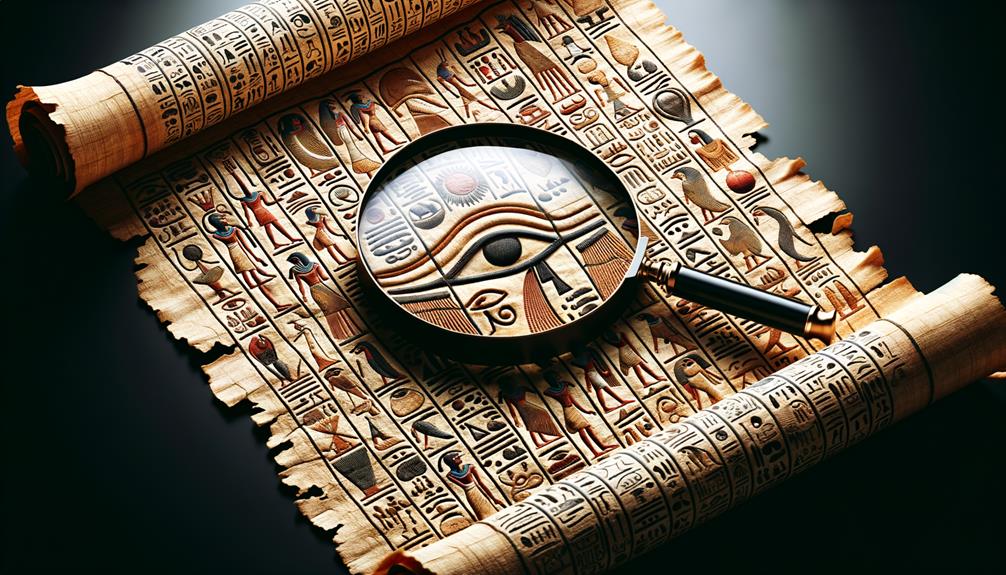
The Book of the Dead, packed with symbolic illustrations, is like a road map to the afterlife for ancient Egyptians. As we decode these symbols, we gain fascinating insights into their beliefs and rituals. Foy Scalf, from the University of Chicago, points out how crucial these often visually-rich Dead manuscripts are, which the Egyptians referred to as 'rw nw prt m hrw', or 'Spells for Going Forth by Day'.
Here's a quick rundown of five crucial points about these symbolic illustrations:
- They played a crucial role in explaining the spells, especially if you weren't fluent in hieroglyphics.
- The presence of these Books in tombs underscores how vital the illustrations were for interpreting the content.
- Luxurious editions of the Book, typically adorned with illustrations, were designed to aid the deceased in their journey to the afterlife.
- Some manuscripts stretched up to 30 meters, emphasizing the importance of visual aids.
- For those who couldn't afford a copy, priests or family members would recite the spells and their accompanying symbolic illustrations.
The Book's Influence on Modern Culture
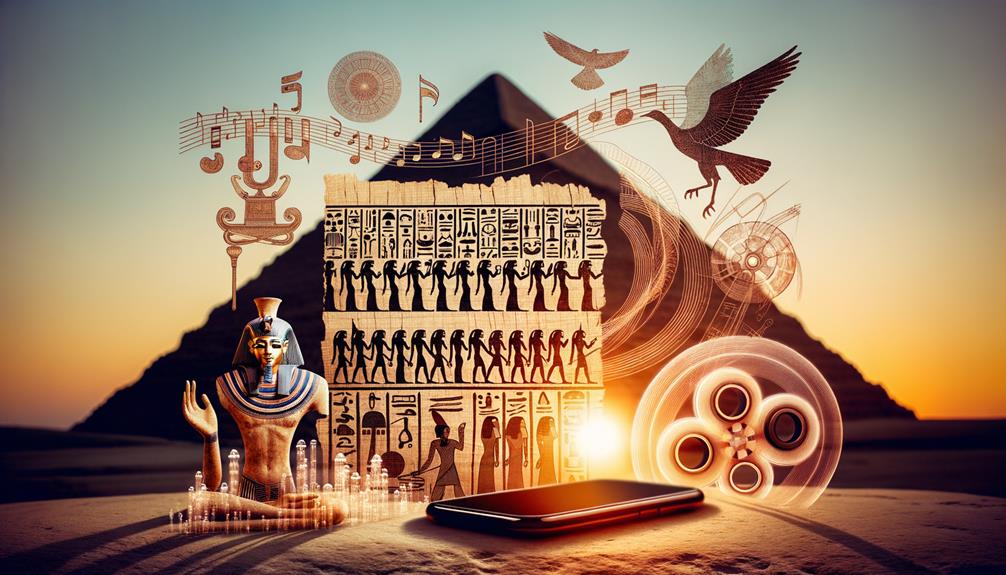
Although the Book of the Dead, with its symbolism and rituals, seems far removed from our era, its core ideas and themes have actually seeped into many aspects of today's culture. Concepts like the journey to the underworld, judgment, and the use of spells, all of which are part of this ancient manuscript, strike a chord with the spiritual trends and popular entertainment of our time.
Take, for example, the Egyptian god Anubis. He's made his way into everything from video games to museum exhibits. The Paul Getty Museum in New York is a prime spot to witness this, as it houses a significant collection of artworks featuring Anubis, a testament to the Book's influence, also known as Coming Forth By Day, on contemporary art.
The Book's depiction of the afterlife has also impacted our views on moral responsibility. The idea of weighing the heart, which stands for facing the consequences of one's actions, is a topic that's often addressed in our modern media.
The impact of the Book isn't just limited to pop culture, it has also left its mark on the academic world. Studying the New Kingdom period, when the Book was widely used, helps us understand how our fascination with this rich, ancient civilization continues to shape our own society. The influence of this ancient text is indeed far-reaching and diverse.
Frequently Asked Questions
What Did the Egyptian Books of the Dead Tell Us?
The Egyptian Books of the Dead give us a fascinating glimpse into ancient perceptions of life after death. They make it clear just how important it was to make sure the journey after death was a smooth one, highlighting their profound spiritual faith.
What Is Spell 125 in the Book of the Dead?
Spell 125 holds a pivotal role in the Book of the Dead. It represents a declaration of innocence made before Osiris, the god of the underworld, where the departed asserts they haven't indulged in wrongdoings such as lying or stealing. This statement holds substantial weight in determining their destiny in the world beyond.
What Is the Spell 17 in the Book of the Dead?
Spell 17 holds a key role in the Book of the Dead, as it aids the departed on their journey to the afterlife. This spell acts as a safeguard and mentor to steer the deceased through the underworld, with the ultimate goal of getting them to the Hall of Judgment.
Is There a Book of the Dead in Egypt Right Now?
Absolutely, you can find versions of the Book of the Dead right in Egypt today. Museums and historical archives house many of these, and others are still being discovered at archaeological digs. It's quite a remarkable instance of ancient history that captivates the mind.

